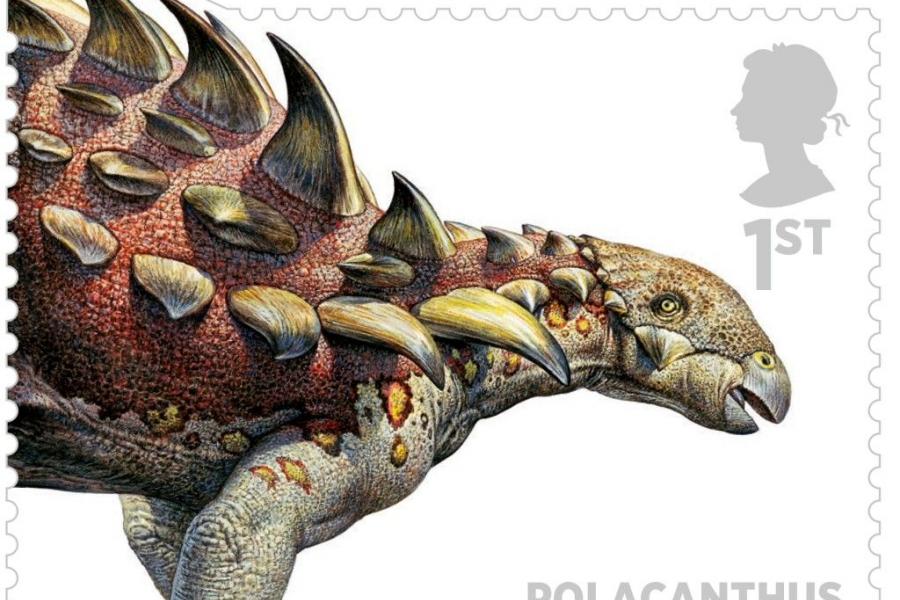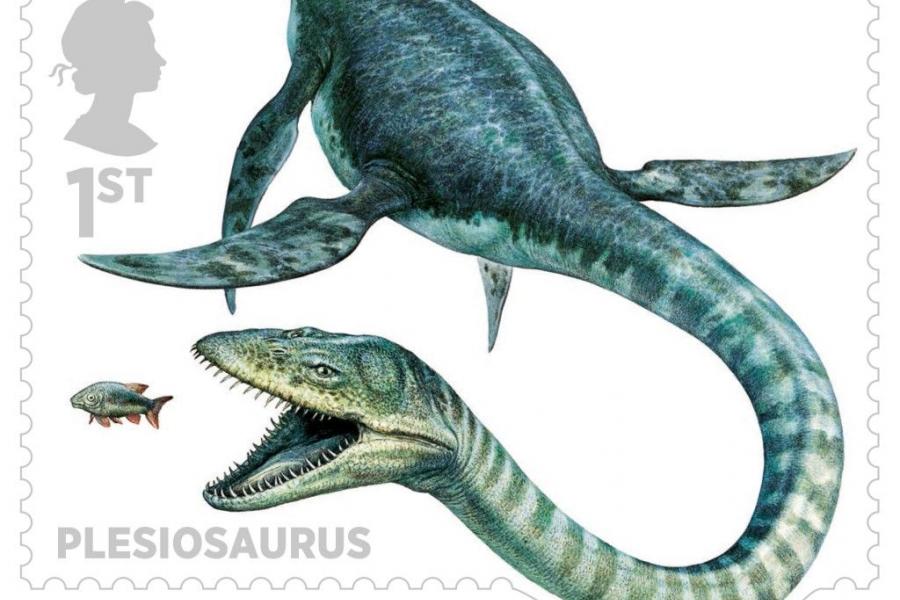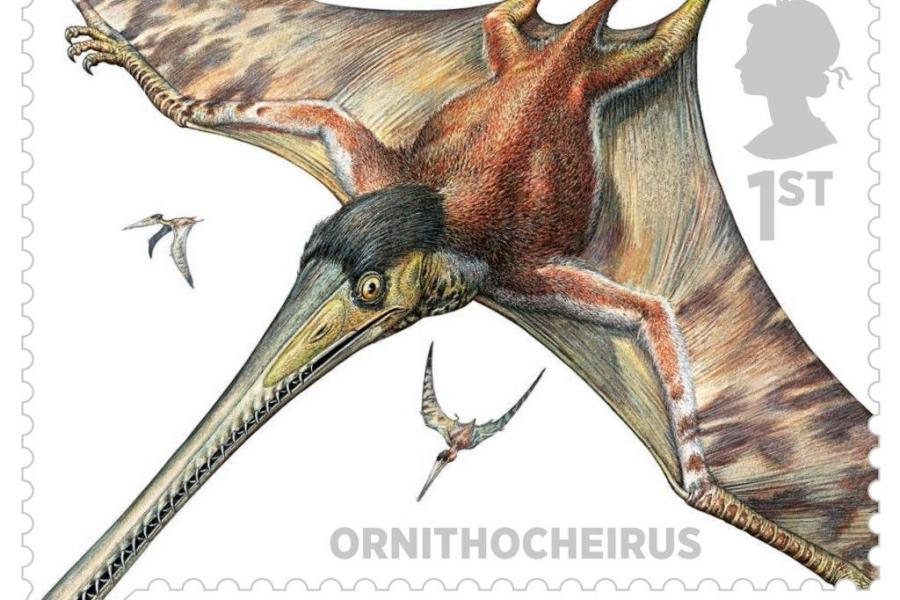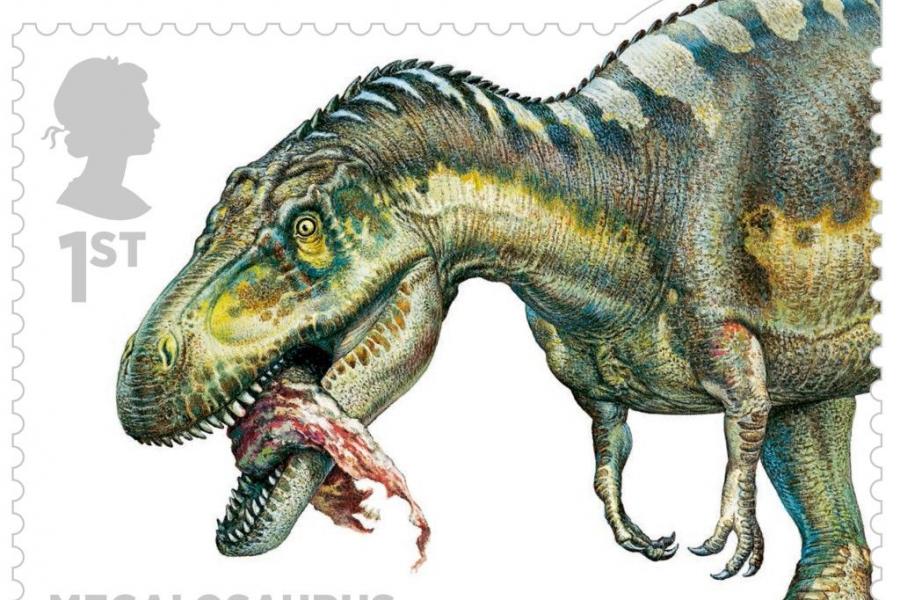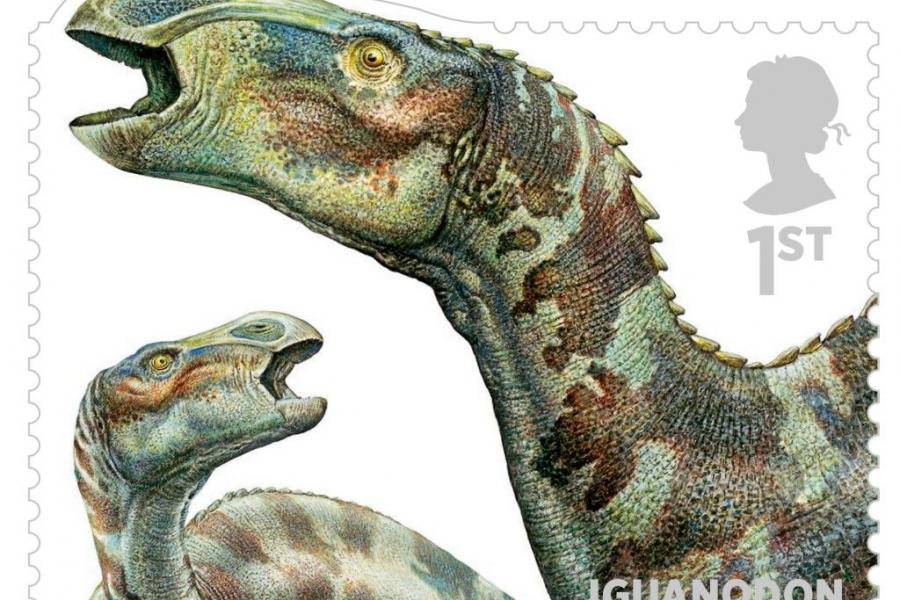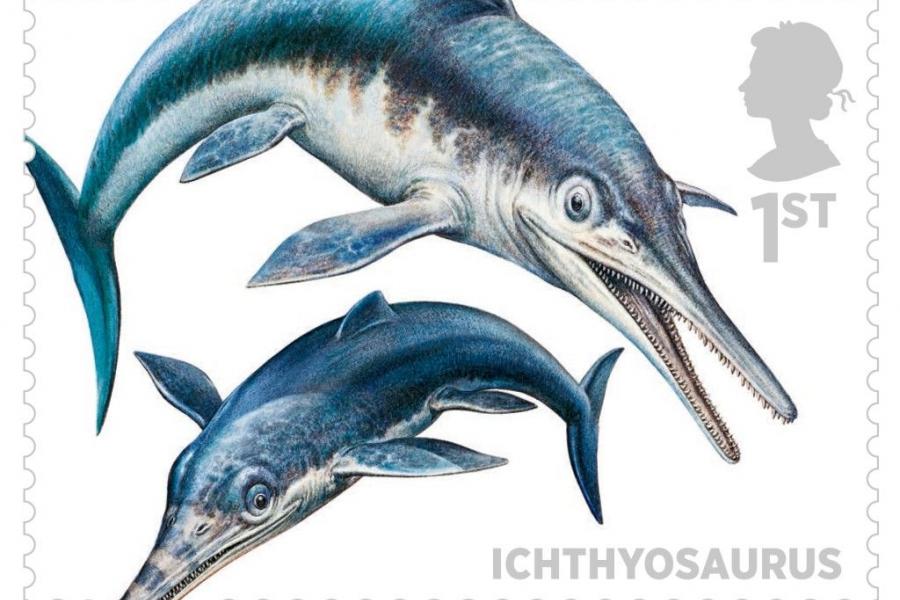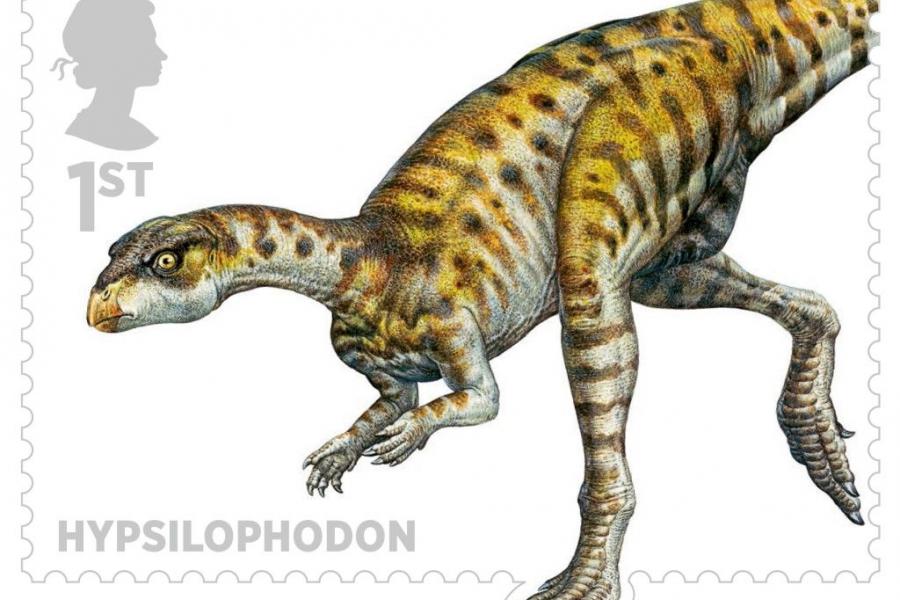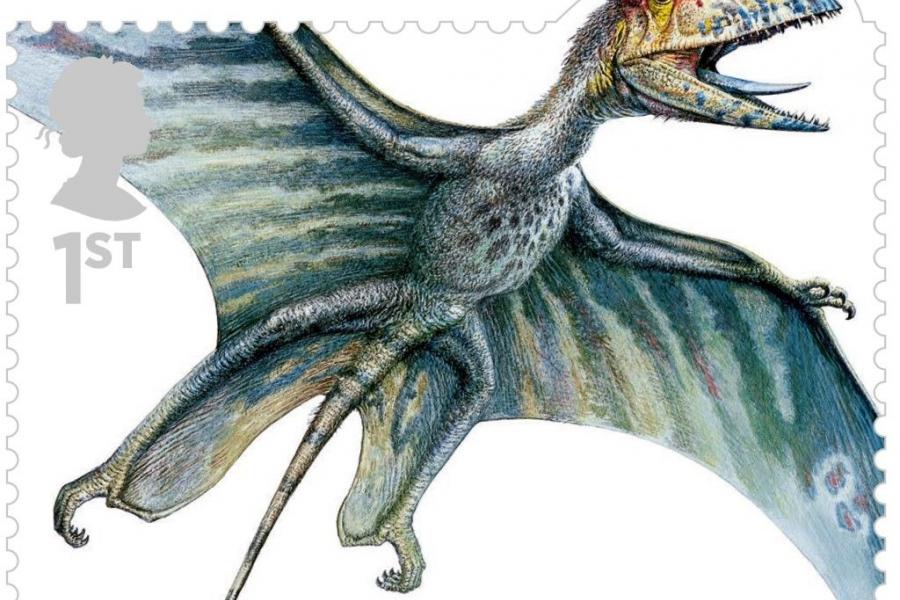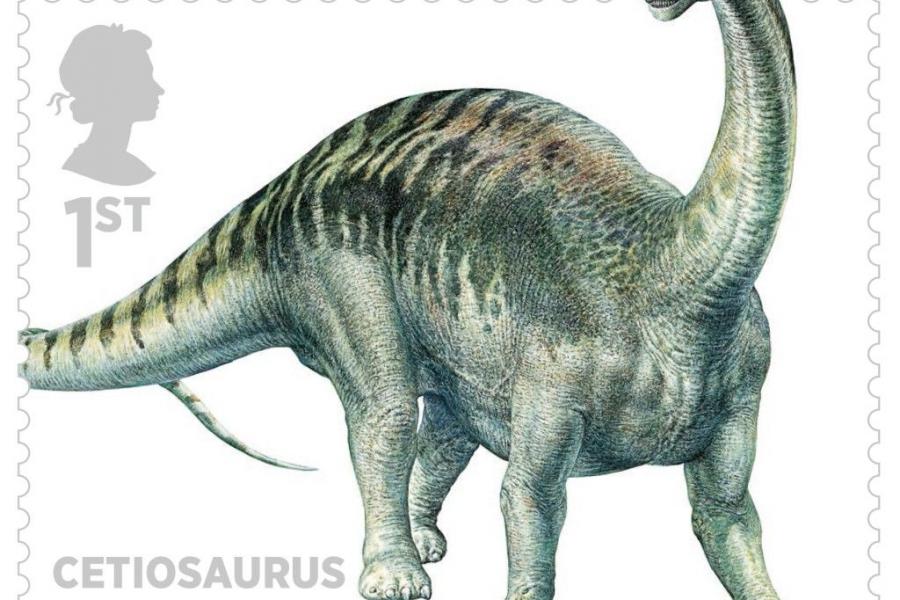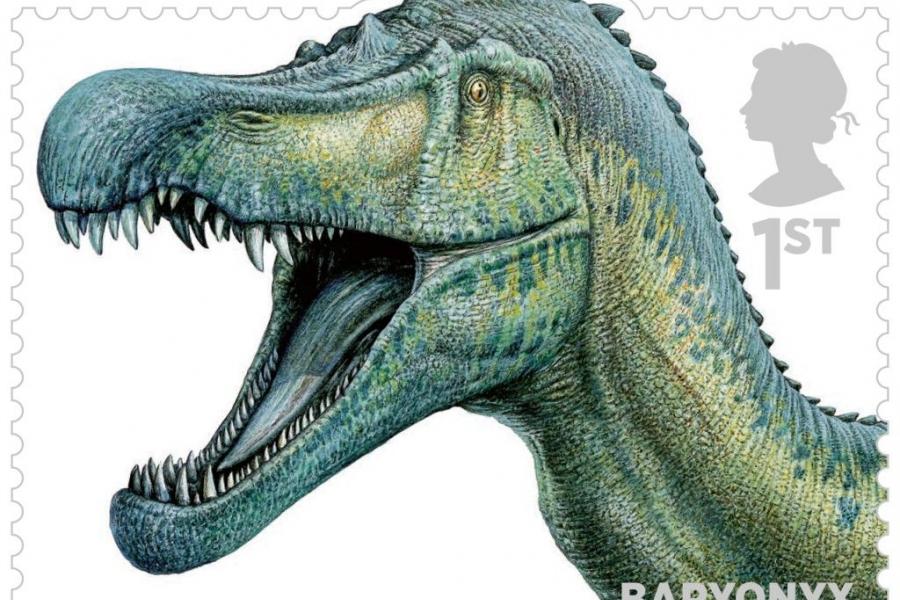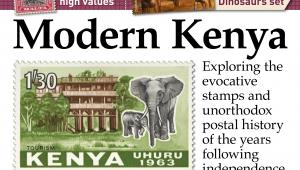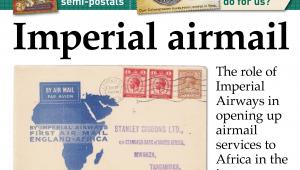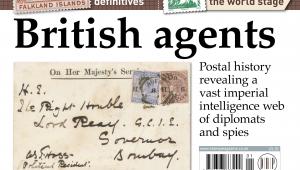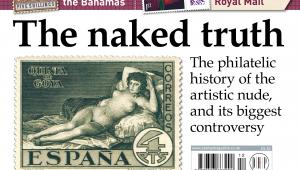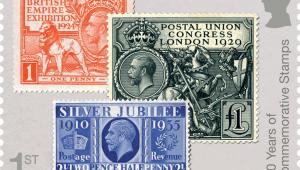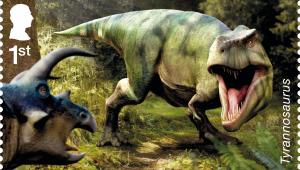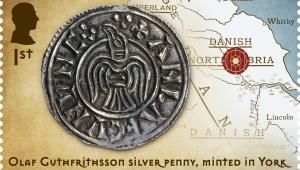Dinosaurs seen bursting out of their stamp frames

Royal Mail’s new Dinosaurs set, issued on October 10, features prehistoric reptile species whose fossilised remains have been discovered in Britain.
Specialist illustrator John Sibbick was commissioned to paint images of the ‘terrible lizards’ as they might have looked, with Dr Angela Milner of the Natural History Museum advising on their appearance.
The theme, which has not been covered on British stamps since 1991, ties in with the release of the 3D film version of the popular BBC television series Walking With Dinosaurs, which will be out in cinemas in December.
The self-adhesive stamps are free-form die-cut, so the creatures appear to burst out of the frames. The issue was designed by Why Not Associates and printed in gravure by Cartor.
COMMEMORATIVE WORTH
All the species were found in Britain, but there is no anniversary linked to what is essentially a thematic set
QUALITY OF DESIGN 
Some might call these ‘sticky labels’, but they’re a cut above that thanks to lively design and detailed rendering
WOW FACTOR 
Children will love the stamps, which is no bad thing, and they’ll surely catch a few adults’ eyes too
1st class Ornithocheirus
The lightweight ornithocheirus (‘bird hand’) flew by soaring and gliding on its long, narrow wings, and fed by skimming the surface of the sea to catch fish in slender jaws which were fringed with outwardly-pointing, interlocking teeth.
1st class Polacanthus
Known from only two partial skeletons, both lacking skulls, the heavily armoured polacanthus (‘many spines’) was a herbivorous quadruped protected against predators by spikes and studs along its body and a heavy hip shield of flat, bony plates.
1st class Iguanodon
With forelimbs which were much shorter than its hind limbs, iguanodon (‘iguana tooth’) was a herbivore that could stand or walk on all fours but ran bipedally. Its distinctive thumb spikes might have been for defence or for foraging.
1st class Ichthyosaurus
Well adapted to life in the sea, ichthyosaurus (‘fish lizard’) breathed air and could give birth to live young in the water, rather than laying eggs. About the size of a modern dolphin, but with vertical rather than horizontal tail flukes, it ate fish and squid.
1st class Dimorphodon
The two different sizes of teeth in the jaws of dimorphodon (‘two-form tooth’) suggest that this flying dinosaur was a fish-eater. It had a large, puffin-like beak, short wings and a long tail.
1st class Baryonyx
Baryonyx (‘heavy claw’) was a land-based fish-eating creature with a long snout full of serrated teeth. It had a huge thumb claw covered by a horny sheath, which may have helped it catch its prey.
1st class Hypsilophodon
With a short thigh and a long shin, hypsilophodon (‘high-ridge tooth’) was a fast runner. With no body armour, running would have been this comparatively small plant-eating biped’s only defence from predators.
1st class Cetiosaurus
The large, dense bones of cetiosaurus (‘whale lizard’) were thought to belong to a whale when the first fossil was found, hence its name. In reality it was a huge land-dwelling herbivore, weighing the equivalent of 20 small cars.
1st class Megalosaurus
Megalosaurus (‘great lizard’) was a heavily-muscled bipedal carnivore with long, curved teeth. An exceptional set of footprints discovered in Oxfordshire in 1997 records the 1.5-tonne creature crossing an ancient mudflat at pace.
1st class Plesiosaurus
A marine reptile with a small head on the end of a long, flexible neck, plesiosaurus (‘near lizard’) swam like a sea turtle, with two pairs of huge paddles giving it good manoeuvrability as it hunted small fish and squid.
OTHER PRODUCTS
A presentation pack, stamp cards and a first day cover are available.
PRICES
Set of 10 stamps £6.00
Presentation pack £6.50
Stamp cards £4.50
First day cover £7.68
First day envelope £0.30
TOTAL £24.98
